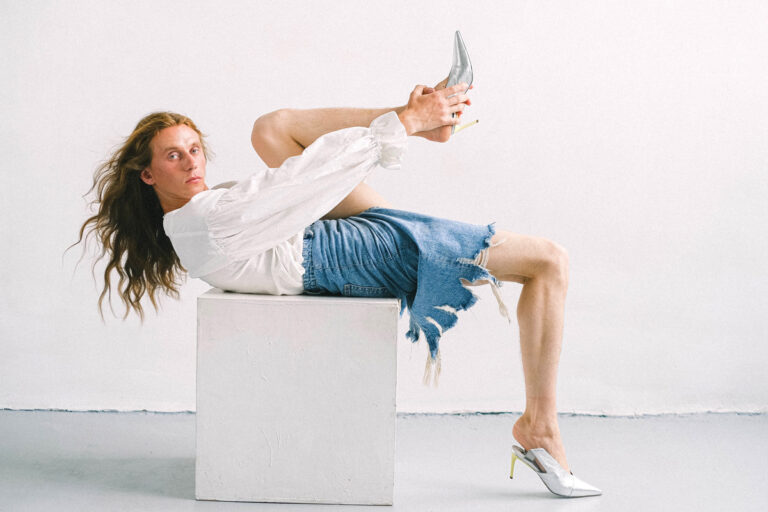10 cultures that have accepted non-binary gender identities for centuries

We previously saw how the internet’s binary code affects the way we see and express gender online. But, as you probably already know, controversy over gender identity is not confined to the web. A simple Google search of the keyword ‘non-binary’ will pull out more than enough articles proving just how strong the divide is.
While the rest of us argue over discriminatory laws and an overall non-inclusive society, other cultures have been introduced to and have, in turn, accepted non-binary gender identities for centuries! For them, the concept of someone not identifying strictly as male or female was just not that hard to grasp.
Here are 10 cultures that have shown throughout history that non-binary gender is far from new.
1. Fa’afafines and Fa’afatamas in Samoa
In traditional Samoan culture, boys born into male bodies who identify as female are known as ‘Fa’afafines’. They are fully accepted into the Samoan culture. Fa’afafines’ roles in society move fluidly between the traditional male and female. While they’re assigned male at birth, Samoa also recognises ‘Fa’afatamas’—an equally fluid gender for those assigned female at birth.
“Gender roles, even sexual desire, are shaped to suit society. That means gender identity is often hugely shaped by culture. Being a woman in Samoa is quite different from being a woman in Western society,” explained a woman in a National Geographic video on sexual identity in Samoan culture.
In Samoan culture, gender identity is as simple as it gets—if you say and feel you are neither male or female, or that you fluctuate between both genders, this will simply be accepted by society. This is a social norm that the rest of the world could really learn from.
2. Two-spirit in native North American Navajo culture
For many native North American cultures, transgender individuals are known as “two-spirit.” Identifying with masculinity as well as femininity, two-spirit people are often said to contain both male and female ‘spirits’. They’re often revered in their communities, seen as a channel between the physical and spiritual.
For Zuni, a native American tribe, the term for a two-spirited person is ‘lhamana’. We’wha—the most famous lhamana was born in male body—wore a mixture of men’s and women’s clothing.
We’wha spent time performing ‘women’s tasks’ such as cooking, gathering food, and serving as a mediator in the Zuni tribe in what is now New Mexico. Anthropologists, authors, and even US President Grover Cleveland were “utterly charmed” by We’wha’s intelligence and understanding of the world.
We’wha was not even close to the only “two-spirit” native North American. Many other tribes have their own terms for a tribe member living in one body but who has the spirit of more than one person.
3. Muxes in Juchitán de Zaragoza, Mexico
In the small town of Juchitán de Zaragoza in southern Oaxaca State, Mexico, live the ‘muxes’—people born in a male’s body but who identify as neither female nor male. Muxes are part of ancient culture and are well-known in the town.
Traditionally, muxes would be admired for their talent in embroidery, hairstyling, cooking, and craft work. However, Naomy Mendez Romero, who shared photographs and her story with The New York Times, is an industrial engineer—challenging limits on muxes by entering a career path more often viewed as male.
The bathroom controversy has disrupted life for muxes only slightly, causing a taunting from men in the community. “Me, use a boy’s bathroom? No.” Romero said, shrugging off the idea of switching stalls after years as a woman.
4. Sekrata in Madagascar
In Madagascar, the Sakalava people recognised a third gender called ‘Sekrata’. Boys in Sakalava communities who exhibit traditionally feminine behaviour or personalities are raised by parents as girls from a very young age.
Instead of labelling these boys as ‘gay’, they are seen as having a male body and identifying as a female. Sexual preference is not a factor for the Sakalava and raising a child in this third gender is natural and widely accepted in the community’s social fabric.
5. Sworn virgins in Albania
Balkan ‘sworn virgins’ are women who take a vow of chastity and wear male clothing in order to live as men in patriarchal Northern Albanian society, Kosovo and Montenegro. To a lesser extent, the practice exists, or has previously existed, in other parts of the western Balkans, including Bosnia, Dalmatia (Croatia), Serbia and Macedonia.
By taking on this identity, sworn virgins are elevated to the status of a man, entitled to the rights and privileges of the patriarchy. National Geographic’s documentary TV series Taboo (aired in 2002) estimated at that time that there were fewer than 102 Albanian sworn virgins left.
6. Hijras in South Asia
The centuries-old third gender, associated with sacred powers, usually refers to those assigned male at birth but don’t identify as such. In 2014, India legally recognised hijras as a third gender after they were criminalised by the British in 1871.
Hijras have their own ancient language—Hijras Farsi and served monarchs in South Asian regions for centuries. Today, they are primarily outsiders in their communities, excluded from many economic opportunities.
In spite of marginalisation from the rest of the world, whom they refer to as “dunya daar” the Hijras preserve their own language and culture where gender knows no boundaries.
7. Metis in Nepal
Officially recognised as a third gender in Nepal in 2007, metis have a long history in the Himalayan region. Assigned male at birth, they assume a traditional feminine appearance. Nepal set a global precedent with a third gender category on official documents.
8. Toms in Thailand
One of the dozen or more common gender identities in Thailand, ‘toms’ are women who adopt masculine mannerisms and style, while using male speech terms. Toms are often attracted to ‘dees’—women who follow traditional Thai gender norms.
9. Brotherboys and sistergirls in Indigenous Australian culture
Used by Aboriginals and Torres Strait Islanders, brotherboys describes people with a gender experience inconsistent with their assigned sex, with a male spirit and male roles in the community. Sistergirls are the exact opposite.
10. Bugis in Indonesia
This ethnic group has seen gender as a spectrum for centuries now, with three additional genders in addition to male and female. Bugis genders include ‘calabai’ (feminine men), ‘calalai’ (masculine women) and intersex ‘bissu’ priests.
While far from being completely all-inclusive, this list goes to show that non-binary concepts of gender are not a recent phenomenon. It’s important to illustrate that binary gender is not ‘normal’, but rather, one perception out of many. In fact, in comparison, the concept of a gender and sexual binary is fairly recent, and not the other way around. Colonisation largely is to blame for that idea.





